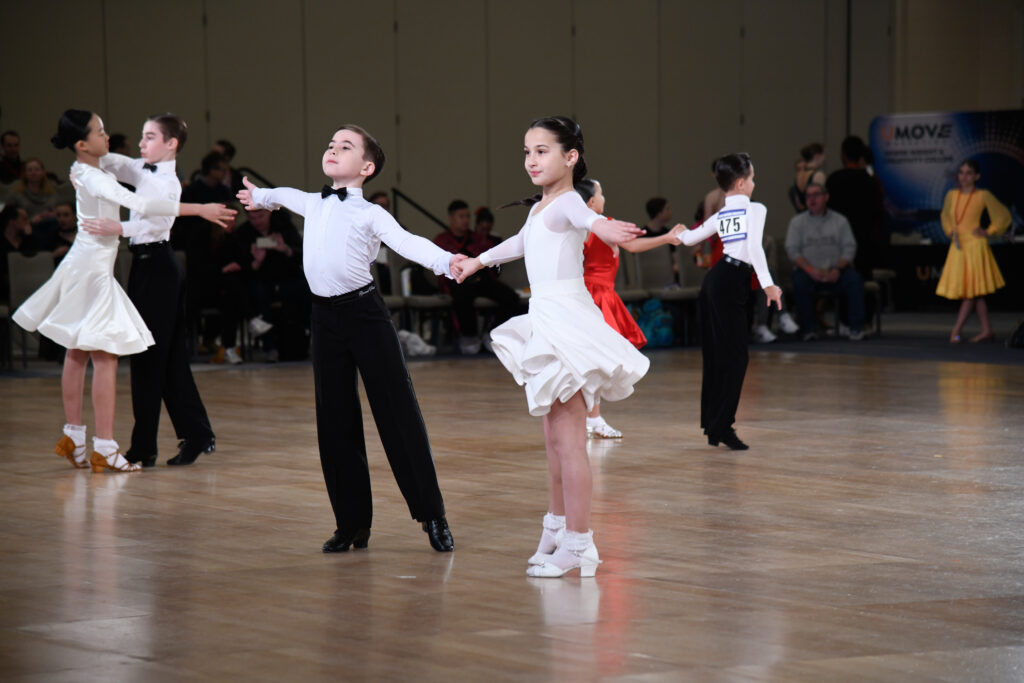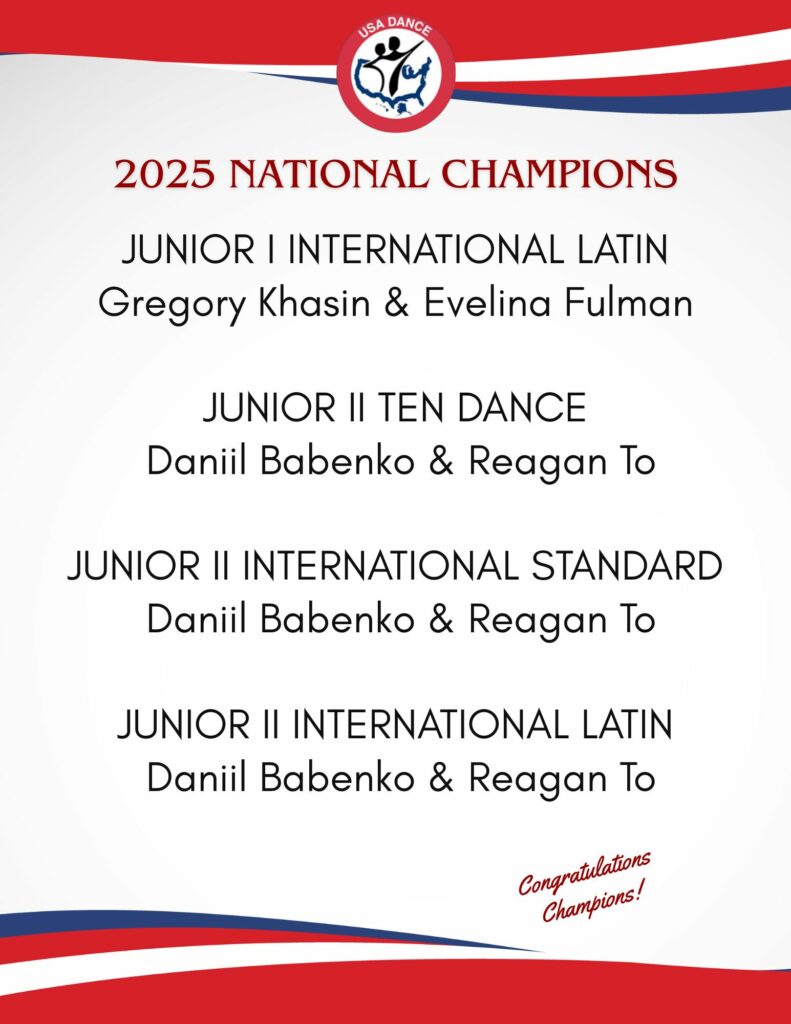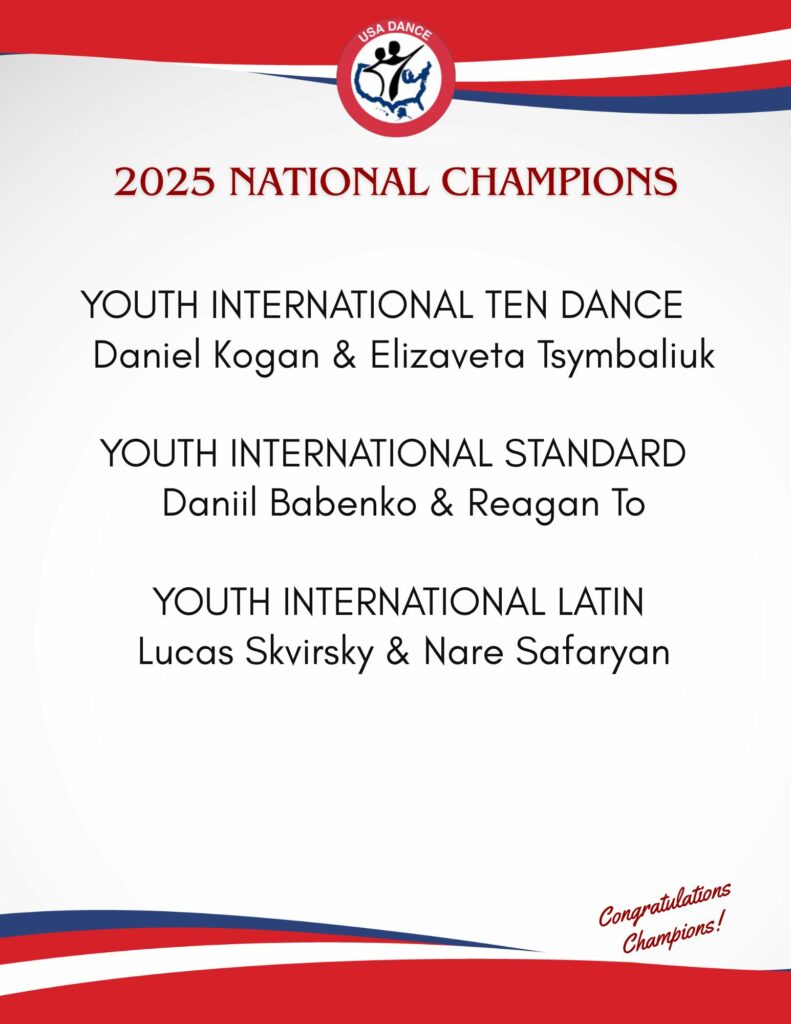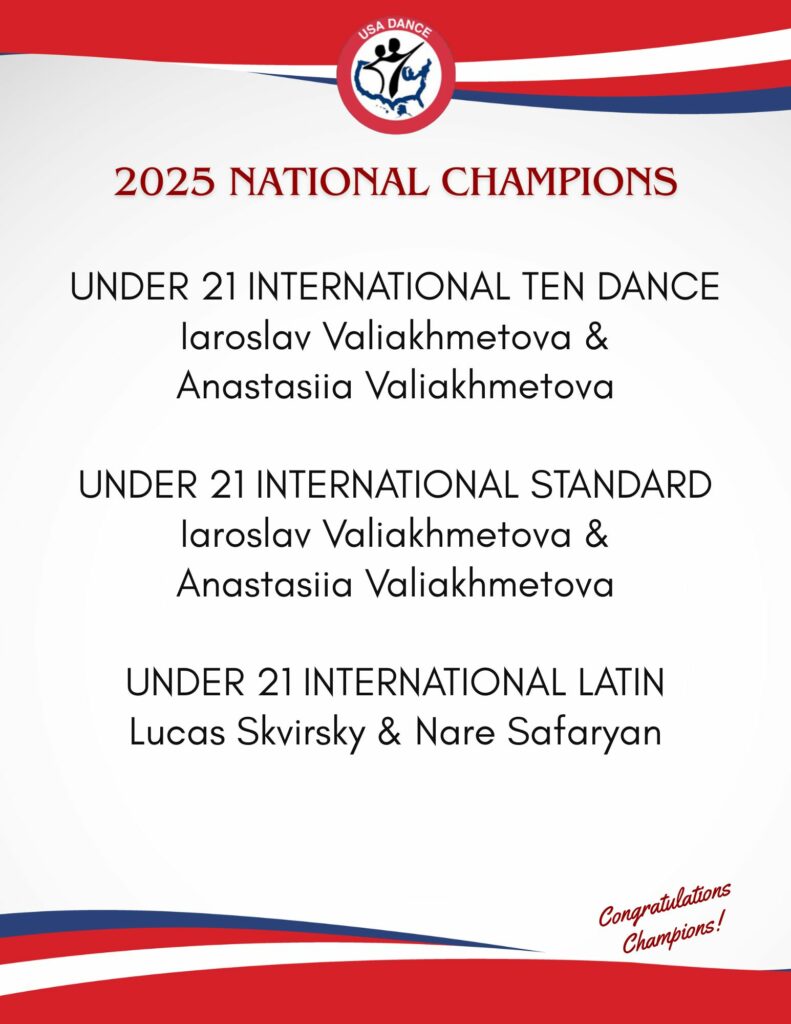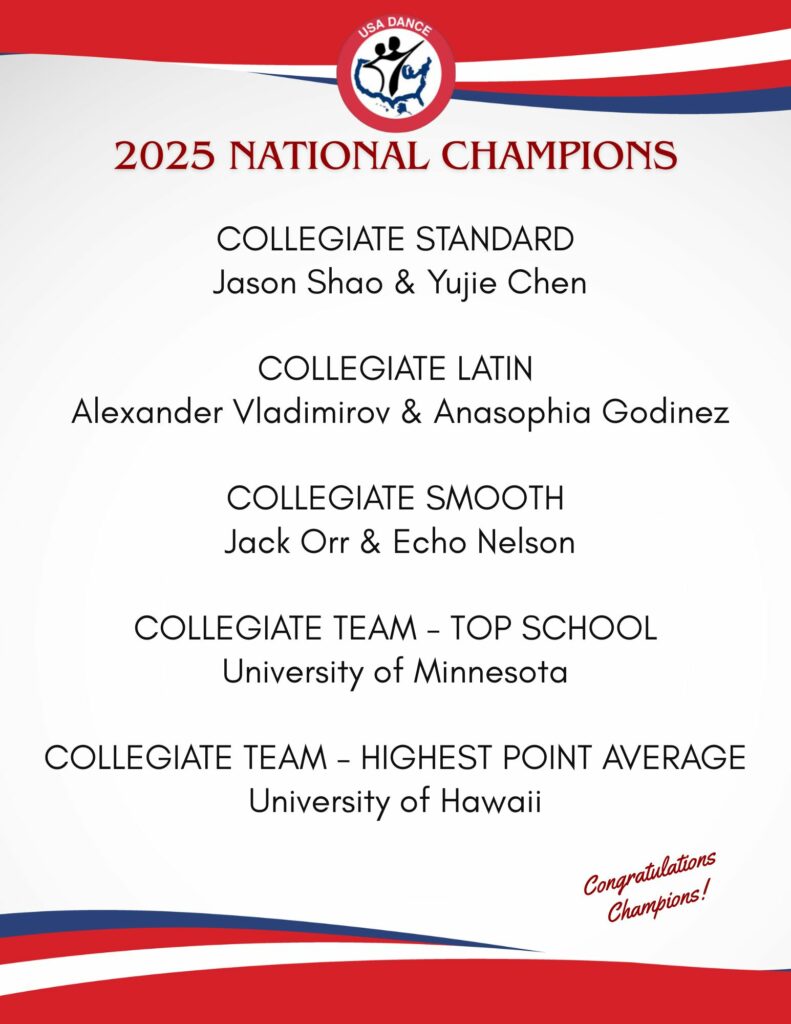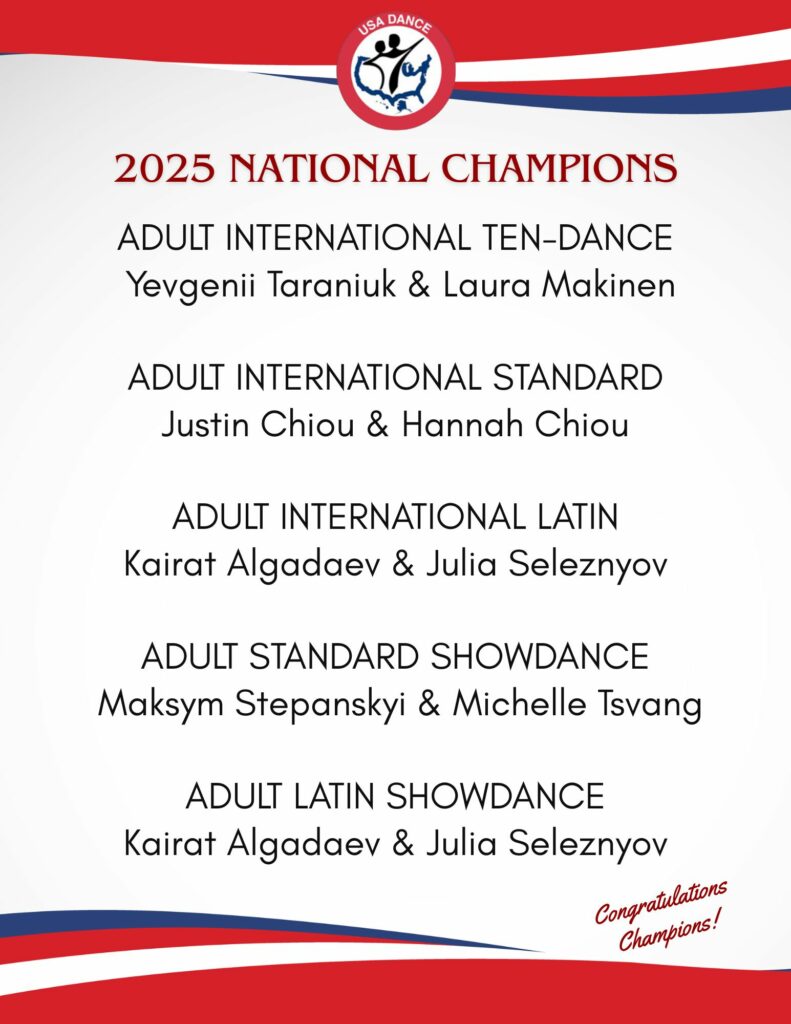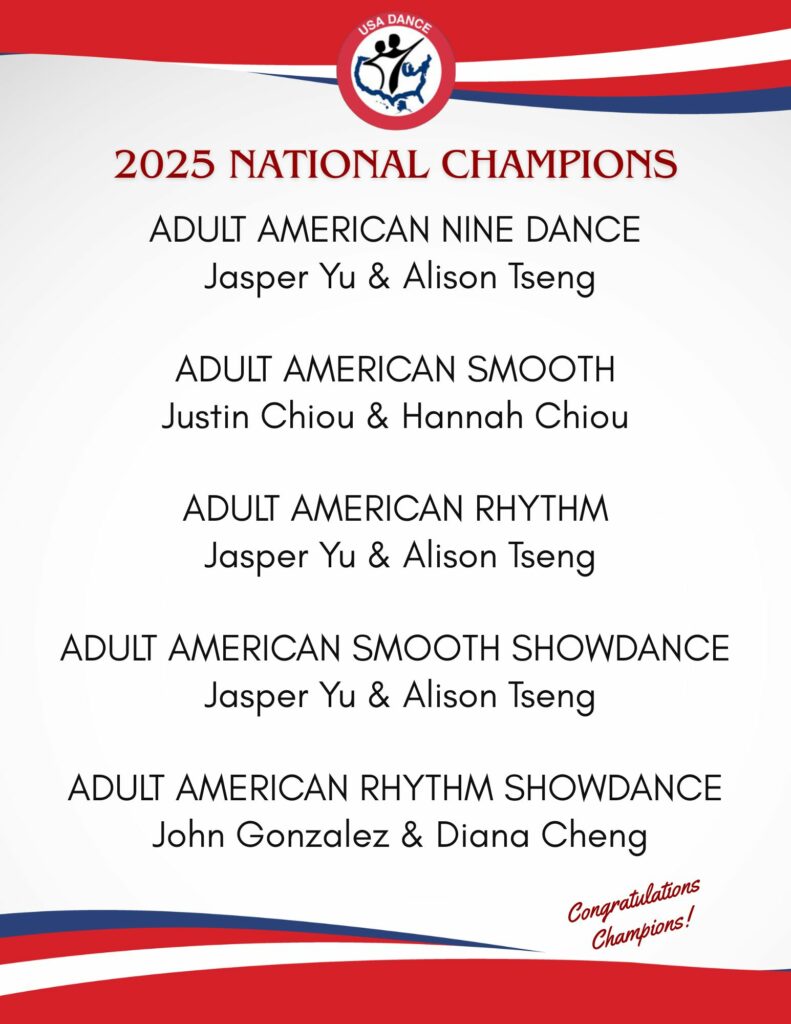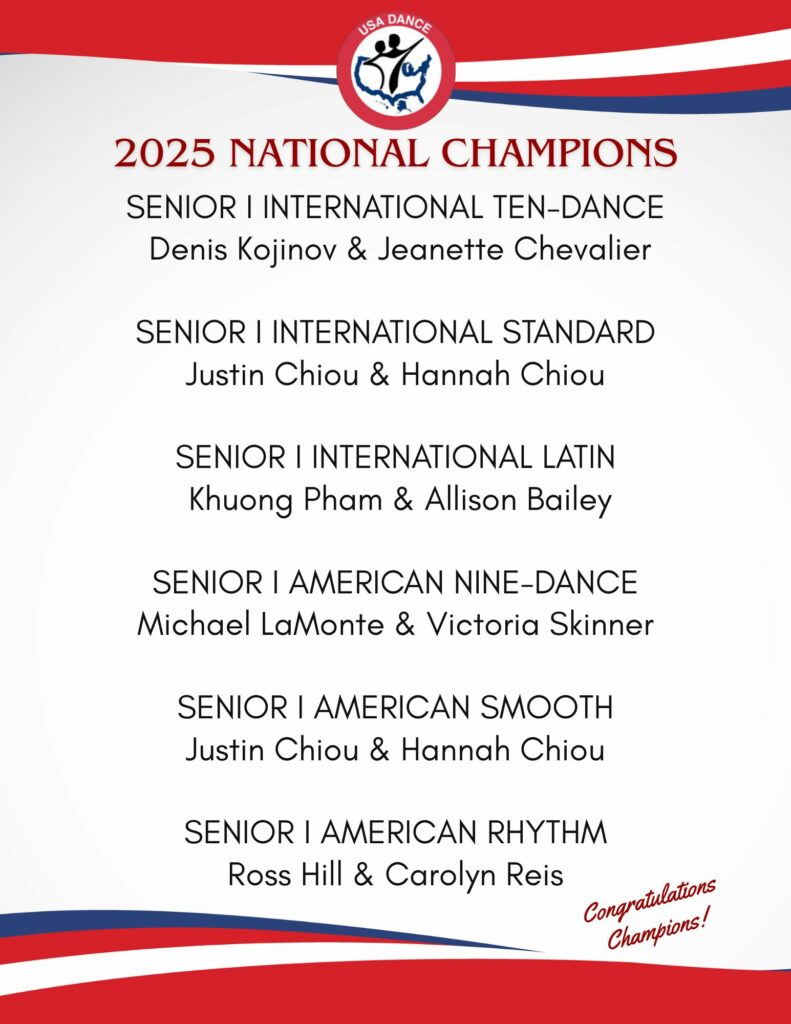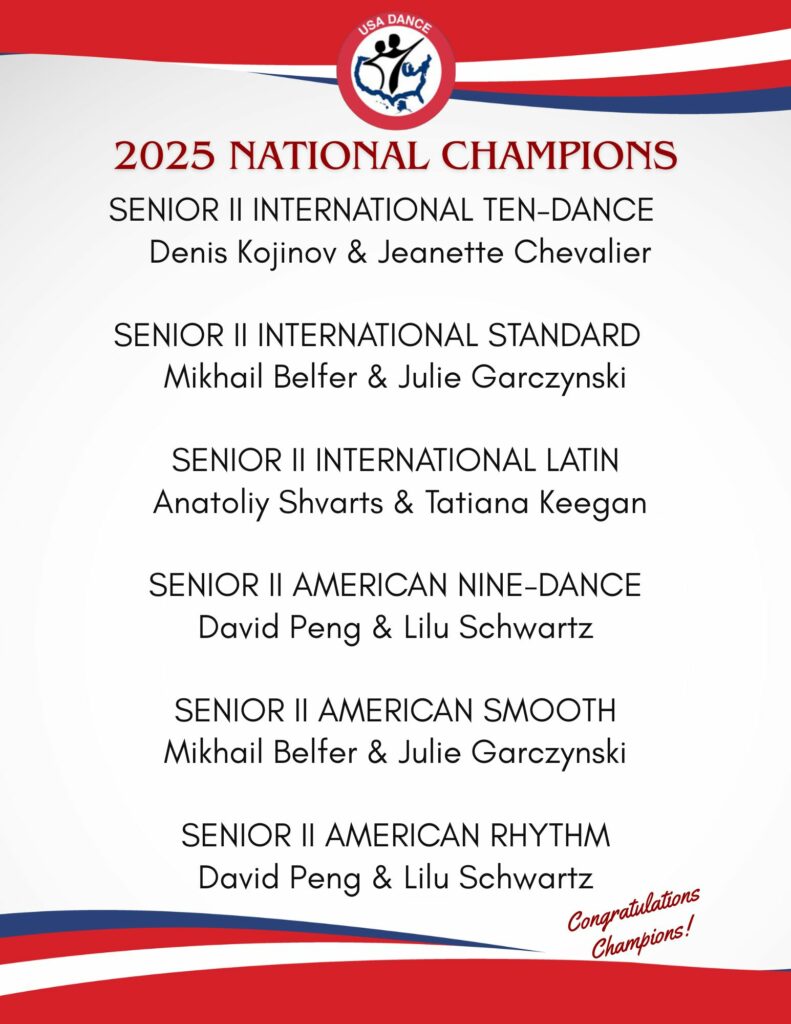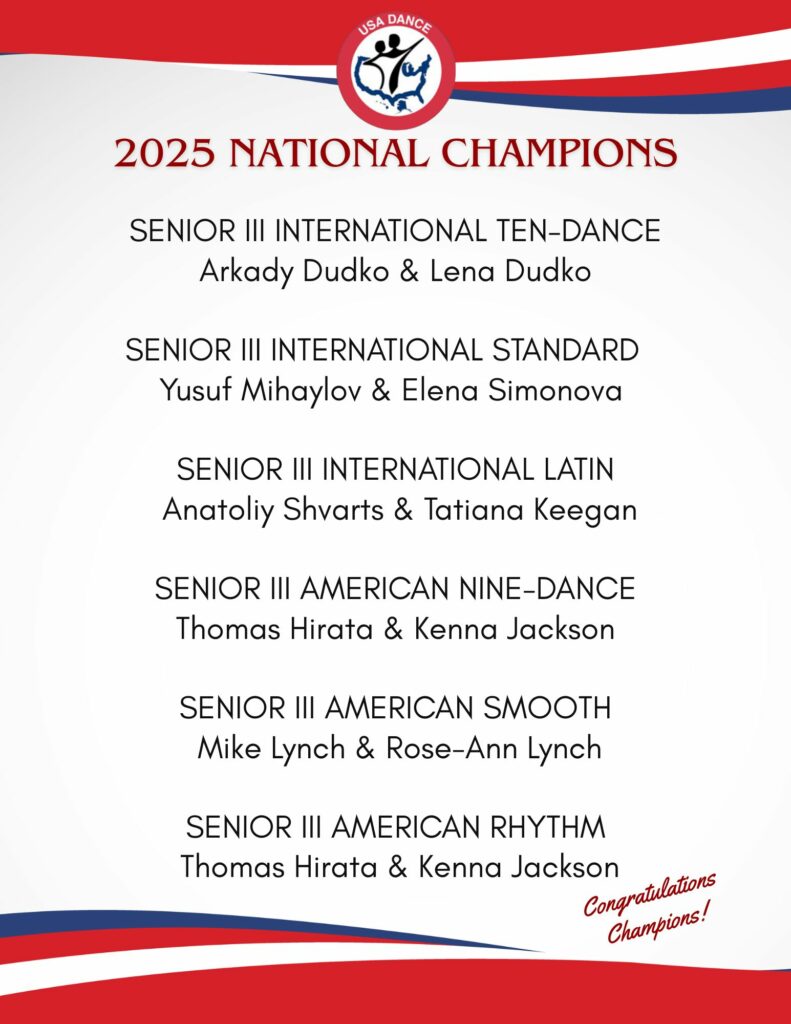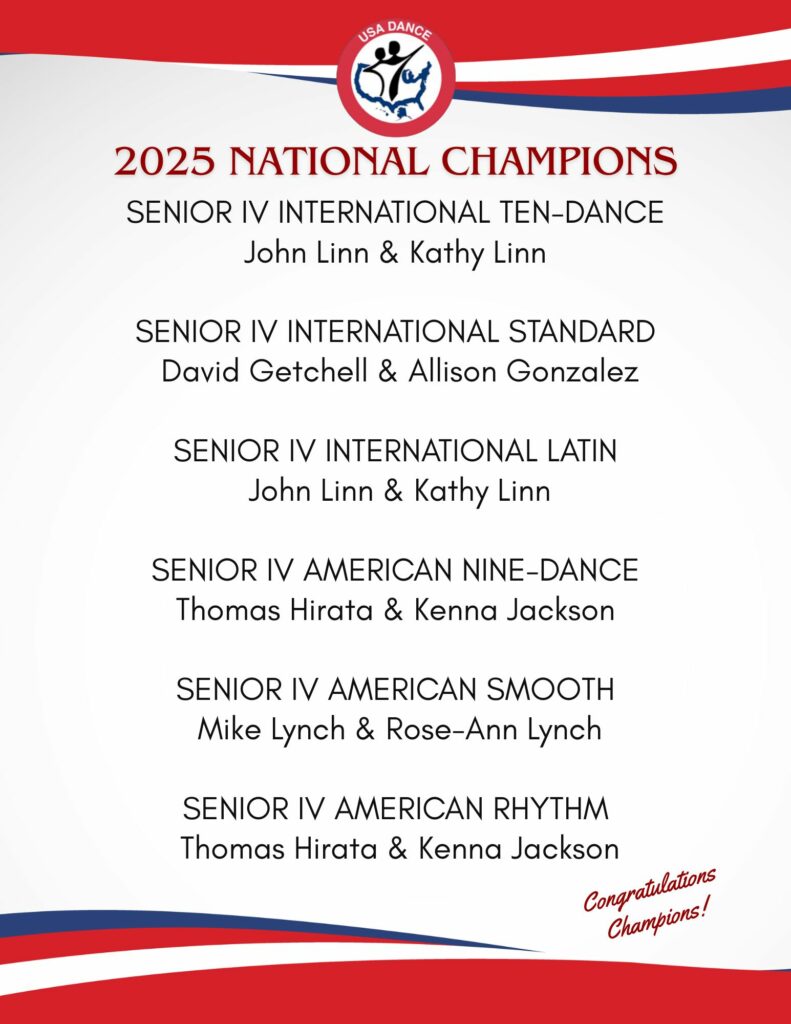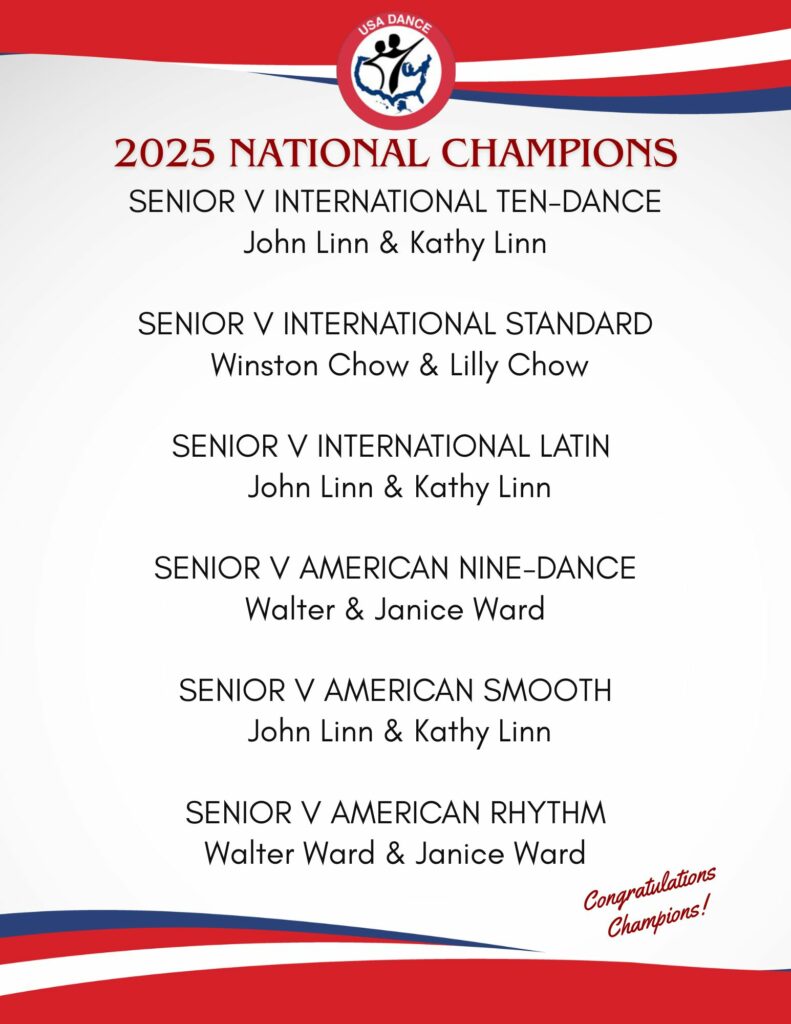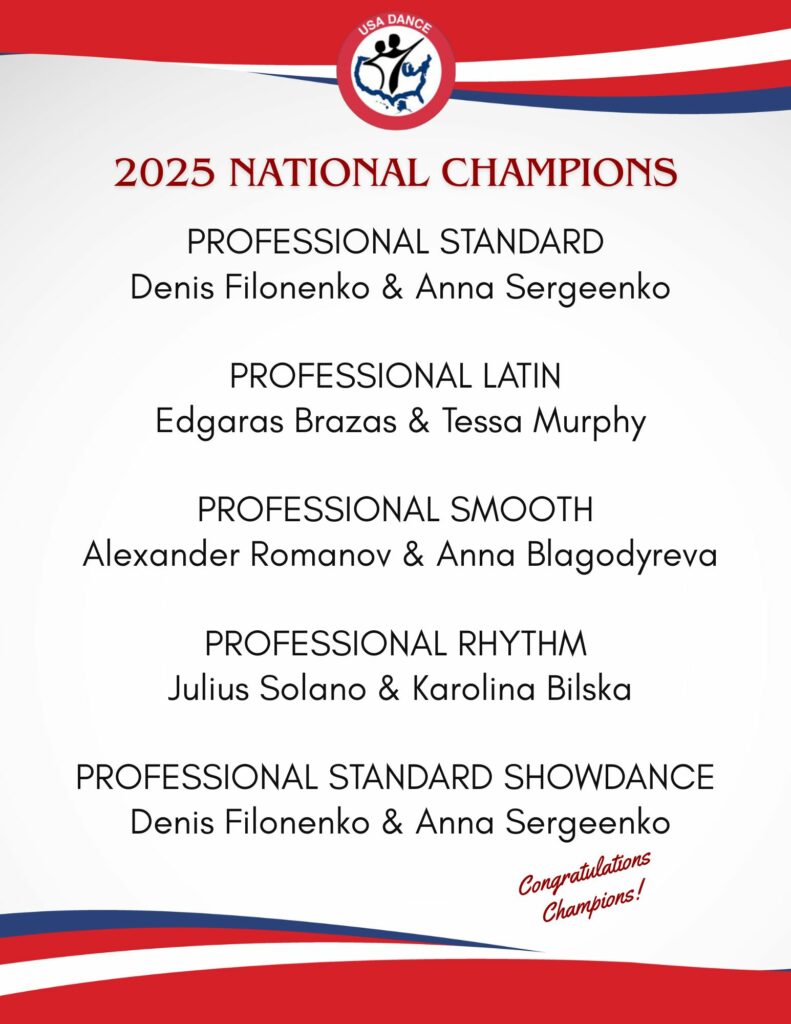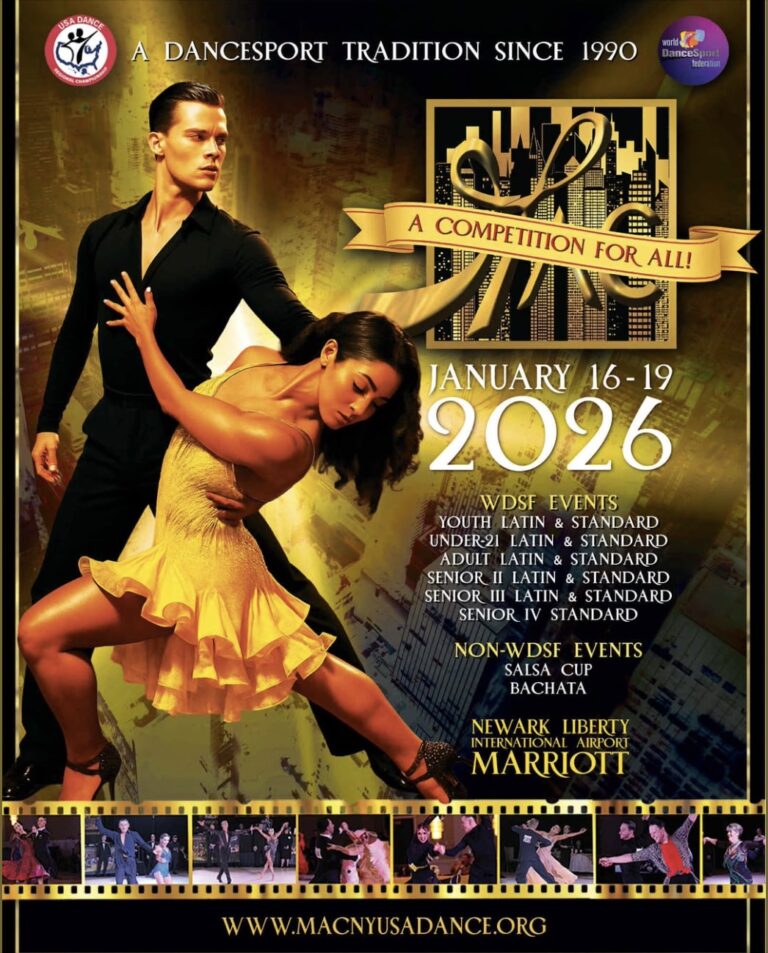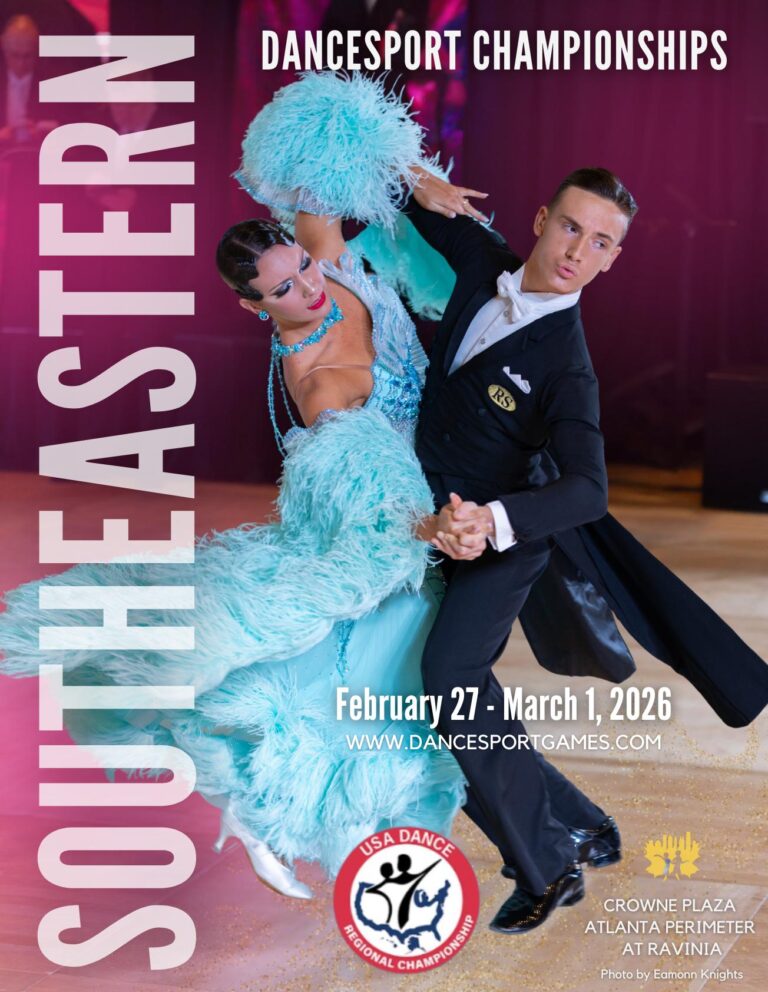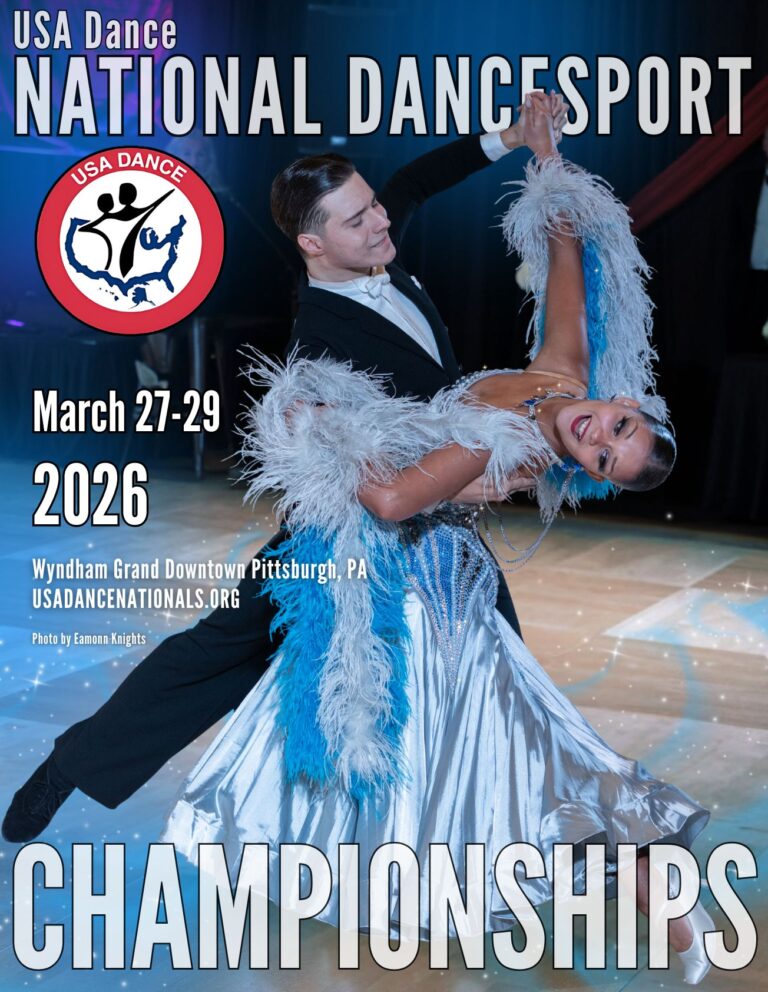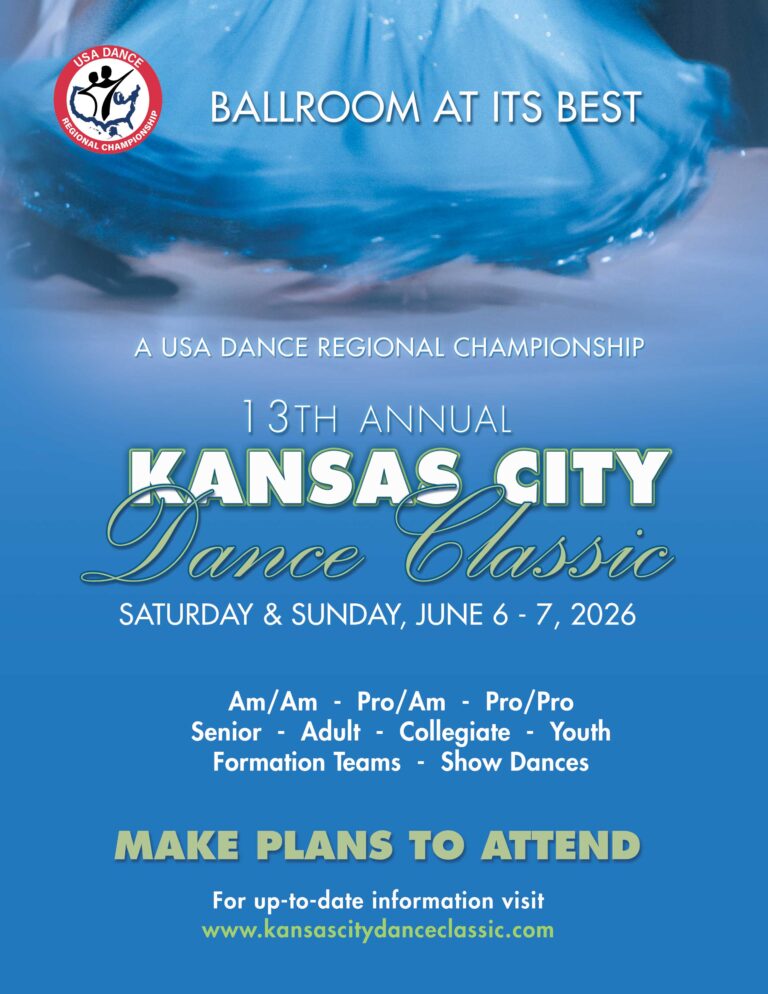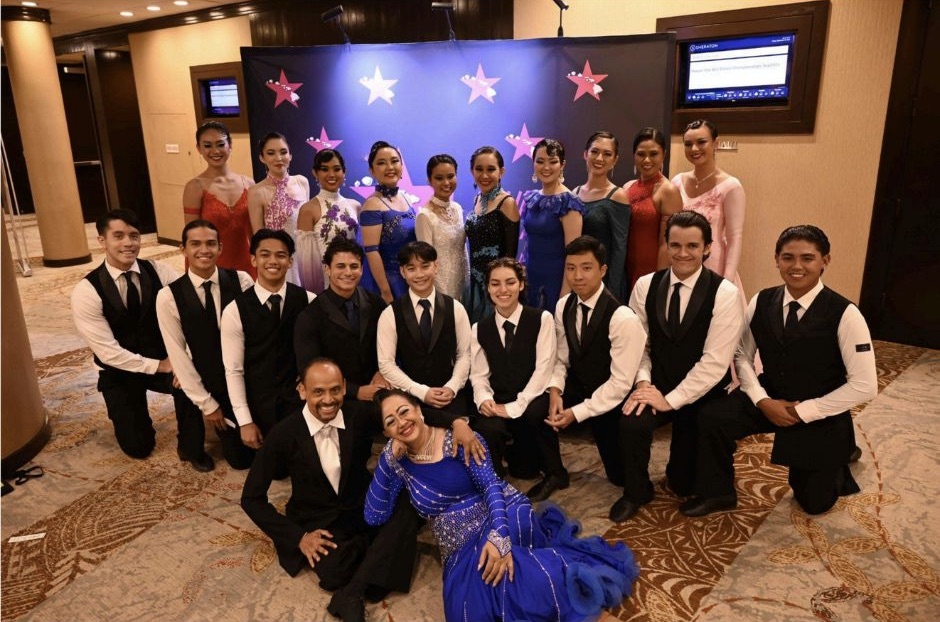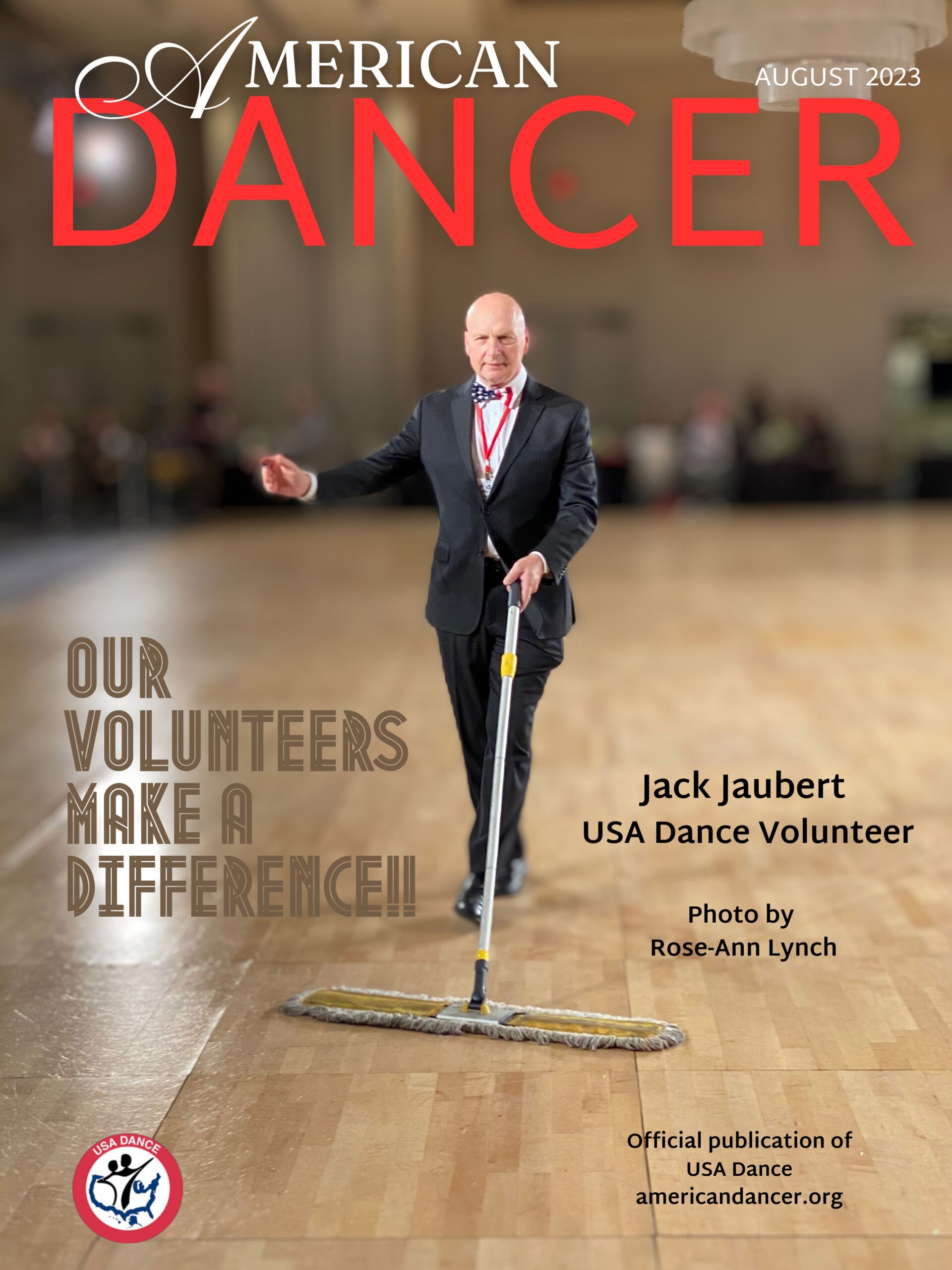Competing in Ballroom Dancing is a lot of fun. It’s a fantastic opportunity to express yourself to music, compete at all ages in something you love, be supported by friends, and grow as an individual.
Yet over the years, there have been concerns among DanceSport Athletes. Syllabus dancers believe there isn’t a clear system that ensures fair play amongst competitors. There is consternation generated by the misperception that syllabus “moves” are directly linked with progression, setting sometimes unrealistic development targets. Some dancers mistakenly believe that doing more advanced moves makes someone a better dancer; they focus on steps and patterns over the quality of movement at the risk of underperforming or even injury. Lastly, organizers are restricted and unable to provide more opportunities for dancers to dance and have fun at the events.
To elevate USA Dance events beyond these limitations, a task force spent the last two years developing an easy-to-use approach to take USA Dance events to the next level. Known as the USA Dance Proficiency Points System, the project has reached the point where we are ready to share it with dancers and begin the process of adoption.
We believe this system will be simple to understand. However, it helps to recognize this is a break from tradition, and dancers are asked to come with an open mind. The details can be found in the full rule set. The primer we’ve prepared below will answer most of your questions and should be read first. The key elements are as follows:
1) The proficiency system is intended to ensure dancers who clearly are more proficient than their peers are ultimately required to advance to a higher category. The point of any proficiency system is to ensure that someone who has won their category and proven they are more skilled must move to face couples that are closer to their skill level.
2) The proficiency system makes progression more fun by earning the right to advance. You must earn a certain number of points in your current level to advance to the next level. This gives competitors a better sense of their progress from competition to competition, as well as a clear sense of when it is appropriate to advance to the next level. Existing dancers will be seeded into their current levels, so they do not have to ‘start from scratch’. Transferring dancers from other circuits will be able to request to be seeded into a higher level.
3) The USA Dance proficiency classes are compatible with our sister federations within the World DanceSport Federation (WDSF) and align well with the existing systems within the United States. A similar ‘class’ system is commonly used in Europe. The historical syllabus system in the United States also has a progression much like the class system and aligns well with this new system, so you won’t feel lost as we migrate. However, please note that the class system makes no statements about what syllabus a given class should be expected to know. It largely makes a statement about the progress of your quality of movement.
The systems line up as presented here. (Note: This is not meant as a strict translation, but as a rough guideline of where you might fit best into the new system):
- N Class – Newcomer. These dancers have competed for less than a year.
- E Class – Bronze dancer. These dancers do closed syllabus events in the ‘core three’ dances of a given style.
- D Class – Silver / Gold dancer. These dancers do closed syllabus events in the ‘core four’ dances of a given style.
- C Class – Gold / Novice dancer. These dancers have mastery of the syllabus and begin to dance in ‘open’ events with no syllabus.
- B Class – Pre-Championship dancer. These dancers dance open events in all dances within a given style.
- A Class – Championship dancer. This is the first class where dancers vie to become the United States representatives to international events. Note: Some of these dancers achieve impressive results at international competitions.
- S Class – Elite. This class is composed of dancers who compete internationally at the highest levels.
4) You earn points by doing the things that imply you have more skill than your competitors. Points are awarded for competing against and placing above couples who are in the same or higher class, but no points are awarded for placing above couples who are in a lower class. Couples within the top 12 in the class in a competitive event also earn points.
- Extra points are awarded for placing above couples who are in a higher class.
- Extra points are awarded for first place in a class.
- Points are also earned for being called back to additional rounds.
5) The USA Dance Proficiency Points System will eventually give organizers more flexibility to provide interesting ways to compete. Because proficiency is focused on the quality of movement, this system gives organizers the opportunity to have more flexibility with events. Though all the traditional categories and dances are available to organizers as before, they can choose to offer events:
- By Class
- By Syllabus Level (Bronze, Silver, Gold) or Open
- By Age Category
- By Dances
When registering for events in the future, you can expect it will list the class, syllabus level (if invigilated), age category, and dances available. For example, an event might read: Senior III – American Smooth (Waltz, Tango, Foxtrot, Viennese Waltz) – Gold Syllabus – Class C.
The Rollout Process
To ensure a smooth Proficiency Points System rollout, we will be instituting these changes over time and only as they feel appropriate to the USA Dance competitive community. Initially, there will be no changes at the competitions. However, over the coming months, changes will occur in the following phases:
- Open Feedback Phase – During the Open Feedback Phase, the dance public is encouraged to read the FAQ, ask questions, and provide feedback in our survey. As feedback is gathered, initial tweaks will be considered. Soon, points will be calculated and available publicly. Competitors are encouraged to use the calculations to place themselves and familiarize themselves with the system. We will eagerly read questions and feedback at the Google form. We will also host several Q&A Zoom calls with members of the task force. The first will be on Thursday, May 11, at 9:00 p.m. EST.
- Soft Launch Phase – Feedback will be incorporated. The Soft Launch Phase will involve the testing of procedures and integration with scrutineering systems. The proficiency system will be available to competitors on a ‘recommended’ basis for Regional Championships and National Championships. Sanctioned event organizers that are not running a Regional Championship or National Championship may choose to require the proficiency system during this period, provided they give competitors sufficient advance notice. Feedback will continue to be collected during this period via the Google form.
- Release Phase – During the Release Phase, feedback from the Soft Launch Phase will be incorporated. During this phase, the system will be enforced for each sanctioned USA Dance competition. This system will not enter the ‘release’ phase before the 2024 Nationals. Organizers and competitors will receive significant advanced notice, regarding when this will take effect, so they can plan accordingly.
Frequently Asked Questions:
1. Do I need to calculate how many points I acquire and know lots of math now?
1A. No! The system will do that for you and will have the information about your current level listed after each USA Dance competition. All you will have to do is check that information before each competition and register accordingly. If you don’t do so, the registrar will ultimately reach out to notify you that they need to change your registration to the correct category.
2. I am a Gold dancer. Would I have to start over from the bottom now?
2A. You do not! Current dancers will be seeded according to their existing level at USA Dance competitions. This will be done using a procedure approved by the Ballroom DanceSport Council. You can refer to the earlier description of classes, above, to get a feel for where you may be seeded. Those coming into the USA Dance system in the future may request to be seeded at a higher level. Most new dancers will start as they are – new dancers.
3. Is there a points level for each age category, or does a Senior II ‘A Class’ dancer have to dance ‘A Class’ in Senior I as well?
3A. If you are rated at a given class in a Style, you will have that class in that Style across all age categories. This is the simplest and fairest way to ensure those of a lower class don’t have unfair competition in their events.
4. My partnership ended. How do I figure out my proficiency class with my new partner?
4A. Proficiency points accumulate at an individual level. So, if you change partners, your points still carry with you. The proficiency of your new partnership is determined before each competition. For partnerships with different proficiency levels, you would compete using the procedure outlined in the full rules or in a Mixed Proficiency / Teacher-Student Event. For 9-dance and 10-dance events, you would be required to dance at the highest level you dance between the relevant styles. Note: This is not a change to the current system.
5. May I dance two levels and age brackets, as I do now?
5A. The system (as proposed) will not restrict you from dancing up or in more difficult age brackets, only dancing down. We all want you to get more than your fill of dancing at our events. Since the system provides extra points for placing above competitors of a higher level, it is beneficial for there to be opportunities for competitors to quickly advance to the correct category should they improve in a short period of time. However, organizers may have the choice to specify a minimum eligible class for specific kinds of events.
6. What are some of the interesting events that organizers might run using this new system?
6A. Organizers will be free to use the class system to construct interesting and fun events, at their discretion. These events would be different from the traditional “qualification events”. In theory, they can use any combination of dances, invigilation levels, proficiency classes, and age categories. For example, one event might be where dancers of many classes in a given age category can all compete in one open heat against each other. It would be a great opportunity to dance extra events, dance lots of rounds, and see where you stack up against the competition! Organizers might also choose to hold 6-dance and 8-dance events, letting dancers of a lower class who haven’t learned all 9/10 dances compete in multi-style events. Organizers might also get fancy and choose to do things like hold a special fun event for ‘A’ class (historically Championship level) dancers of a certain age category. However, as a twist, they could restrict participants to dancing only Bronze syllabus. Wouldn’t it be interesting to see the best dancers do the basics for scholarship or just for fun?
7. How does this affect Professional events and Pro-Am events?
7A. This system can be used by organizers for any Amateur-participant event — Am-Am, Pro-Am, Solo Proficiency, Mixed Proficiency, Teacher-Student, or Jack-and-Jill. Professional events are unaffected.
8. Where can I see more details and examples if I have questions?
8A. You can find a detailed breakdown with examples in Appendix D of the Rulebook.
9. I have thoughts about the system already. Is there a place I can provide feedback or ask questions?
9A You should check out the full rules to see if what you’re thinking is included. Whether it is or it isn’t, we’d love to hear positive or negative feedback and answer any questions. You can contact the task force using our feedback form.
10. I see some contradictions between The USA Dance Rulebook and Proficiency System in Appendix D. Which one is correct?
10A. The Rulebook will be adjusted according to the new Proficiency System after the Open Feedback and Soft Launch phases, when full release draws near. Currently, the Rulebook takes precedence.
11. My partner and I have been away from dancing due to injury or other circumstances. Do we have to come back at the same level we left? We are no longer able to dance that well but still want to have some fun.
11A. If you wind up not earning points for a period of time you will have the option to request a drop of one class. This means that those who return due to inactivity or those who find themselves dancing ‘out of level’ will be accommodated.
12. We are Senior IVs and just want to move to a higher level where the competition is. Can’t we just do it? We are not getting any younger.
12A. As proposed, you are generally permitted to dance at a higher class – just not a lower one. The system is helpful to you in a few ways. First, you’ll have some concept that you’re dancing with a higher-level group and set your expectations accordingly. Secondly, because the system is designed for it, it is possible that organizers might begin to offer multi-class events in addition to traditional events. This would give you the best of both worlds – the opportunity to dance in your class and the opportunity to dance against lots of people to see where you stand.

